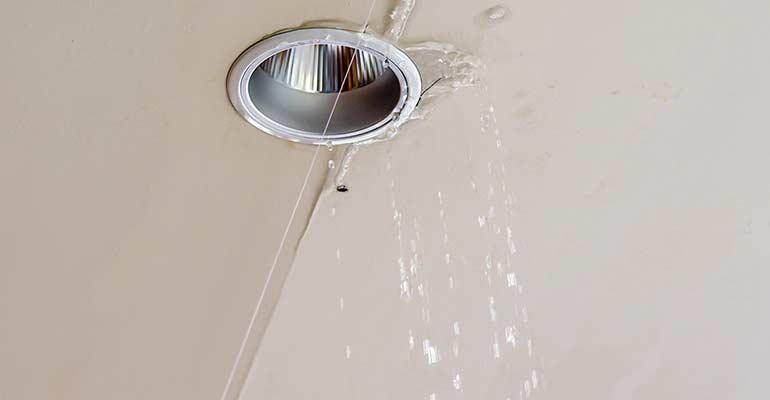Your Residential Primary Frequent Leak Factors: Analysis
Your Residential Primary Frequent Leak Factors: Analysis
Blog Article
We have uncovered this article involving Top Causes of Home Water Leaks directly below on the net and accepted it made perfect sense to share it with you on this site.

Leaks not just trigger waste of water however can likewise trigger unnecessary damages to your home and advertise undesirable organic growth. Water leakages may go unnoticed because most of the pipework in our residence is concealed. By looking and also recognizing for daily circumstances that create leakages, you can shield your house from future leaks and unnecessary damages. Today, we will certainly check out 6 leak triggers that might be triggering your pipes to drip.
Intruding roots
Many water leakages start outside the home rather than inside it. You may see wet spots or sinkholes in your lawn, and that may suggest that tree roots are getting into water lines creating water to seep out.
Corroded water supply
As time passes by, your plumbing system ages and also deterioration such as rust may begin eating away the pipes. This may be the source of staining or bending on your water pipes. This requires an inspection with your plumber right away. Think about changing the pipelines since they are at a higher risk of corrosion than the newer designs if our plumbing system is old.
Faulty Pipeline Joints
The point at which your pipes link is often the weakest web link in the waterline. Pipeline joints can wear away over time, resulting in water leaks. The bulk of pipe joints are not easily visible. If you have noisy pipes that make ticking or banging sounds, specifically when the hot water is activated, your pipe joints are possibly under a great deal of stress. It is recommended to have your plumber evaluate your system yearly.
Immediate temperature level adjustments.
Severe temperature changes in our pipelines can trigger them to broaden and also acquire all of a sudden. This development and also tightening might cause cracks in the pipes, particularly if the temperature level are below freezing. It would be best if you watched on exactly how your plumbing functions. The existence of the previously stated situations often indicates a high danger.
Poor Water Connectors
Sometimes, a leakage can be brought on by loose hoses and pipes that supply your appliances. More often than not, changing is what causes the loosened water Links. You might locate in the case of a washing machine, a pipe may spring a leakage due to trembling during the spin cycle. In case of a water connections leak, you may notice water running straight from the supply line or pools around your appliances.
Clogged Drains
Blocked drains may be irritating and also inconveniencing, however they can occasionally end up creating an overflow resulting in break pipes. Maintain removing any kind of materials that may drop your drains that might obstruct them to avoid such troubles.
All the above are causes of leakages yet not all water leaks result from plumbing leakages; some leakages might come from roof covering leaks. All leaks must be fixed instantly to prevent water damages.
Leakages not only trigger waste of water however can additionally cause unnecessary damage to your residence and also promote unwanted organic development. By looking and recognizing for everyday situations that trigger leaks, you can safeguard your house from future leaks and unnecessary damages. Today, we will certainly look at 6 leakage triggers that might be creating your pipelines to trickle.
At times, a leakage can be caused by loose hoses and pipes that supply your appliances. In case of a water connections leak, you may discover water running straight from the supply line or pools around your devices.
How To Check For Water Leak In Your Home
How To Check for Leaks
The average household's leaks can account for nearly 10,000 gallons of water wasted every year and ten percent of homes have leaks that waste 90 gallons or more per day. Common types of leaks found in the home are worn toilet flappers, dripping faucets, and other leaking valves. These types of leaks are often easy to fix, requiring only a few tools and hardware that can pay for themselves in water savings. Fixing easily corrected household water leaks can save homeowners about 10 percent on their water bills.
To check for leaks in your home, you first need to determine whether you're wasting water and then identify the source of the leak. Here are some tips for finding leaks:
Take a look at your water usage during a colder month, such as January or February. If a family of four exceeds 12,000 gallons per month, there are serious leaks.
Check your water meter before and after a two-hour period when no water is being used. If the meter changes at all, you probably have a leak.
Identify toilet leaks by placing a drop of food coloring in the toilet tank. If any color shows up in the bowl after 10 minutes, you have a leak. (Be sure to flush immediately after the experiment to avoid staining the tank.)
Examine faucet gaskets and pipe fittings for any water on the outside of the pipe to check for surface leaks.
Undetected water leaks can happen without the home or business owner even realizing. If you suspect a water leak, but not able to find the source. It is time to contact a professional water leak detection service, The Leak Doctor.
How To Find a Water Leak In Your Home
https://www.leakdoctor.com/blog/How-To-Check-For-Water-Leak-In-Your-Home_AE197.html

Hopefully you liked our part about Common Water Leaks In House. Many thanks for taking the time to browse our piece of content. Enjoyed reading our posting? Please share it. Let other people discover it. Thank-you for going through it.
Quick resolutions for plumbing disruptions. Report this page